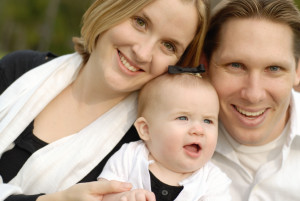
“Gwen Stefani’s baby bump makes its red carpet debut!”
“Halle Berry is a mom again at age 47!”
The tabloids and celebrity TV shows are full of celebrities who have had babies in their forties. Mariah Carey (at age 42), Tina Fey, Salma Hayek, Uma Thurman (all at age 41), Mariah Carey (at age 42), Celine Dion (IVF twins at age 42), Jane Seymour (twins at age 45), and Kelly Preston (age 47) and many more.
I have no problem or issue with these fabulous actresses having babies after age 40. However, it could lead to a misconception in the minds of the adoring public about the impact of age on fertility. “If so-and-so celebrity can have a baby at age 40+, why can’t I?” The reality though, is sobering. Here are some facts about fertility and pregnancy outcome after age 40.
It is not that unusual for women to consider pregnancy after age 40. Some even get pregnant without any difficulty. But many face some challenges trying to conceive.
They experience the same problems as many younger women: the possibility of blocked fallopian tubes, endometriosis-related issues or even male factor infertility. There is one problem that is very common in this age group – decrease in the quality (ability to result in a pregnancy) of the eggs. The medical term for this is “Diminished Ovarian Reserve”.
A woman is born with all the eggs she is ever going to have. When a woman starts getting her periods, there are about 300,000 eggs. A woman will ovulate around 400 times during her reproductive lifespan. Generally, every month although one egg will ovulate, another 1000 eggs or so are lost naturally (a process called as atresia). Atresia is a degenerative process that occurs regardless of whether you are pregnant, have normal menstrual cycles, use birth control, or are undergoing infertility treatment.
Healthy eating, regular exercise are excellent lifestyle choices. However, they cannot prevent this natural physiological decrease in the number of eggs that remain. Fertility starts to decrease around age 27, decreases even more after age 35 and goes into free fall after age 40. The chances of miscarriage also increase with age. After age 40, the chances of a miscarriage are 33 – 50%! The incidence of having a baby with a chromosomal problem also increases with age. The chance of a 45 year old having a baby with a chromosomal problem (e.g. Down’s syndrome or Trisomy 21) is almost 3%.
Even fertility treatments have low success rates after age 40. The latest national figures for IVF are from 2011 and show a live birth rate of 12.2 % per cycle for ages 41 – 42, and 4.2% for ages > 42 years (www.sart.org). At age 44, the live birth rate is around 1.5% and is practically zero after age 45.
There is one option that has an excellent chance of success in women after age 40. In fact, the pregnancy rate is easily > 50%. Many programs (including InVia) have had years when the pregnancy rate with this option has been > 70%. I will also not be surprised if some of the celebrities have in fact used this option – donor eggs!
Infertility Infertility treatment IVF Diminished ovarian reserve

Joined Invia Fertility as Clinical Manager,RN in 2012. Worked in Women's Healthcare for over 30 years. OB-GYNE for over 25 years and currently infertility. Attended St. Mary's College in Winona, Mn. Then went on to follow my dreams at St. Francis Hospital School of Nursing in Evanston, Il. Reflecting back through the years, nursing was my niche in life. I love people so to be able to help and care for them-gives me great self-satisfaction.
Subscribe to our weekly blog digest

Entire Website © 2003 - 2020
Karande and Associates d/b/a InVia
Fertility Specialists

Comments